Sauvie Island is a bird watcher's dream. With birds large and small, this twenty thousand acre area just 10 miles north of Portland, Oregon is a great place to visit. I only had a couple of hours at this scenic spot and it was an overcast and sometimes rainy day, but the birds I saw made me glad I made the trip. In addition to my camera I brought a decent set of binoculars I was able to see more birds than I was able to capture with my camera. These pictures are just a small sample of what awaits visitors to Sauvie Island.
Double-crested Cormorants
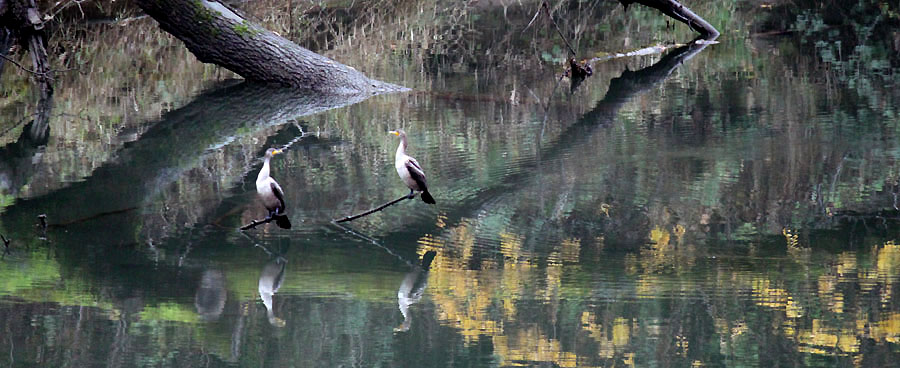 These stunning double-crested cormorants caught my attention as I was walking along the water. Their reflection in the water only added to my perception that they were quite regal. The cormorants appeared to be two mated pairs, and I enjoyed watching them as they perched above the water and looked for fish below.
These stunning double-crested cormorants caught my attention as I was walking along the water. Their reflection in the water only added to my perception that they were quite regal. The cormorants appeared to be two mated pairs, and I enjoyed watching them as they perched above the water and looked for fish below.
Kingfisher
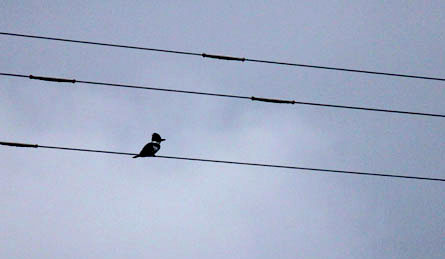
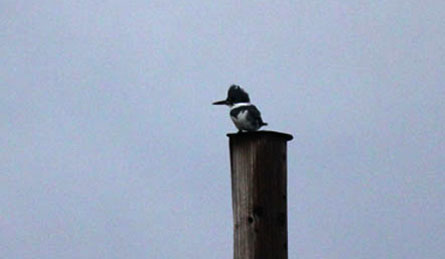
Kingfishers are distinctive birds, and their unique head makes them easily identifiable. I first noticed the bird on a nearby telephone line, but he quickly relocated to his preferred perch. This kingfisher rested comfortably on top of a post, looking out into the water for his next meal. Somewhat solitary birds, this kingfisher was the only one I saw on my visit.
More Water Birds
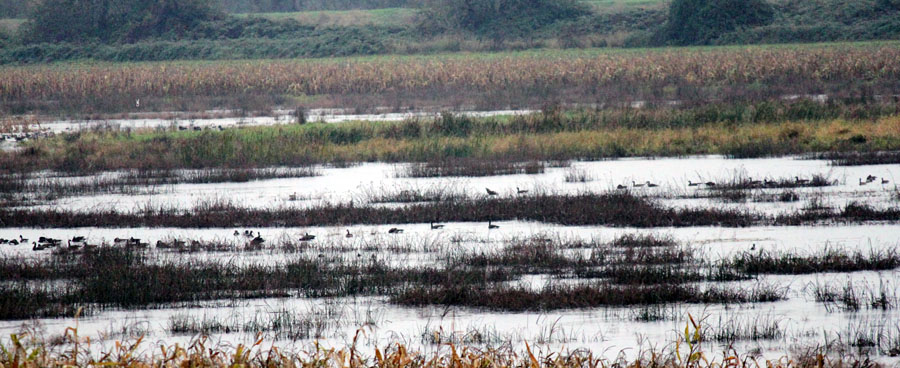 Ducks and geese are commonly found in areas like this, and I was not disappointed at Sauvie Island. Dozens of water birds were visible around the island, and the combination of beautiful scenery and abundant wildlife make this a great place to visit again.
Ducks and geese are commonly found in areas like this, and I was not disappointed at Sauvie Island. Dozens of water birds were visible around the island, and the combination of beautiful scenery and abundant wildlife make this a great place to visit again.
Osprey Nests (and Osprey)
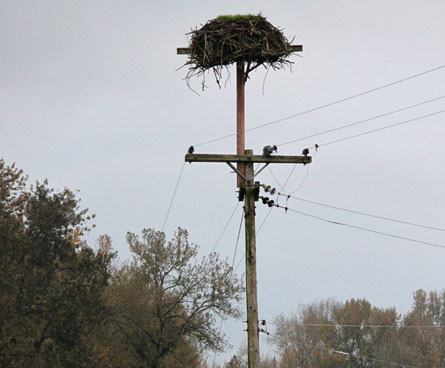
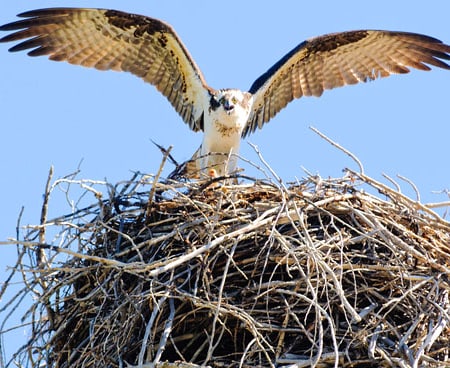
Ospreys are a common site in this area during mating season and although they are nowhere to be seen, their three-foot wide nests grace the skyline up above the trees. These huge nests sit atop phone and power lines across the island, but I was unable to see even one of these majestic birds. After shooting a couple of different nests I finally gave up and found this picture of a nesting osprey and had to make due with that.
Red-Tailed Hawk
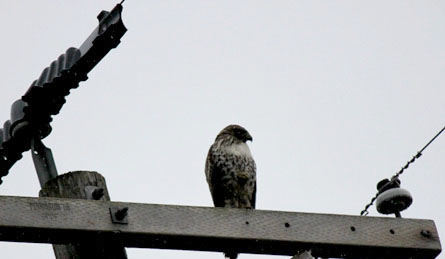
I was; however, able to see this red-tailed hawk. It looked for prey from its high perch as I took photos from below. I was hoping to get a photo of this majestic bird in flight, but he was patient as he watched the neaby fields. I kept walking and when I returned a few minutes later he was gone. Probably off eating his latest meal.
Kildeer
Even though kildeer have a distinctive appearance and gait, this flock of kildeer was very hard to spot in the field. They seemed almost invisible, yet when I got close they would fly around the field together – banking and turning until they found a new place to land. The seeds in the area seemed to be keeping them there, as even when my presence scared them off they would quickly fly around the field and return to an area nearby.
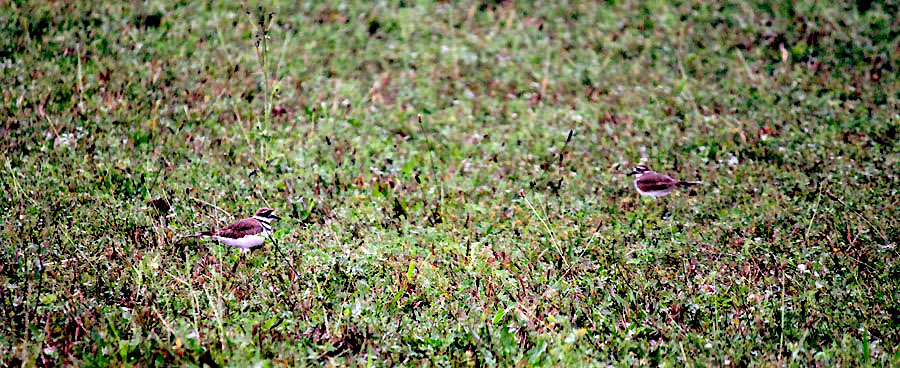 Plus a few surprises
Plus a few surprises
Sauvie Island is home to more than just birds. On my short visit I also saw a large buck and a well-fed coyote. I was surprised to find both so close to where I was hiking but neither seemed concerned with my presence. Native to the area, I'm sure there were many more hiding in the brush and trees.
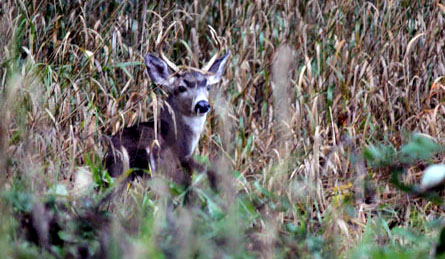
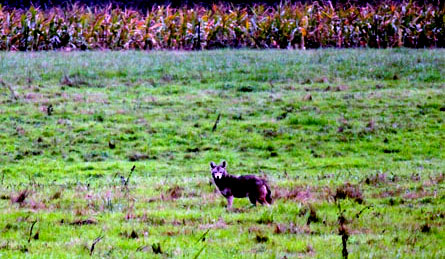
Sandhill Cranes
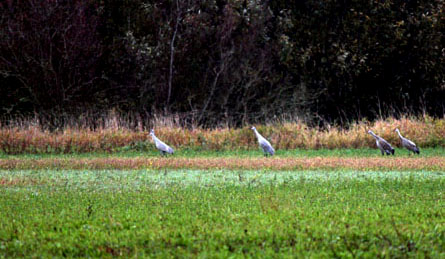
I originally went to Sauvie Island to see the sandhill cranes. There are thousands of sandhill cranes in the area but, on this day, it was hard to get pictures of them on the ground. This group of sandhill cranes was at the edge of a field but as I moved in for a closer look they flew away. It was the only glimpse I would get of these beautiful birds on this trip, and it left me wanting more.